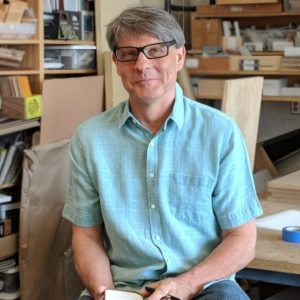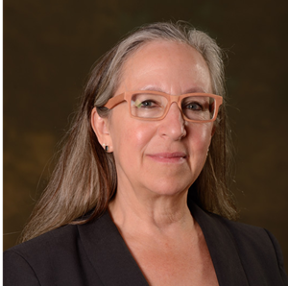
- This event has passed.
Arch Tour Fest: Taylor Yard Bikeway | 2PM
May 13, 2022 @ 2:00 pm - 3:00 pm PDT
$20.00 – $55.00
Photo Credit: Mike Kelley
Arch Tour Fest: Taylor Yard Bikeway / Pedestrian Bridge over Los Angeles River | 2PM
Arch Tour Fest – Full List of Tours Here
This is an in-person event. Attendees will be required to show proof of vaccination along with proof of identification. Please read and check the agreement and safety boxes in the registration. Additional information regarding general event information and check-in process will be emailed directed to registrants 24 hours before the event.
Architecture Firm: SPF:architects
CES Learning Units: 1 LU
Tickets Available Below & Passes Available Here
A unique opportunity for AIA Participants to tour the new and iconic Taylor Yard Bikeway/ Pedestrian Bridge Project over Los Angeles River.
The Taylor Yard Bikeway / Pedestrian Bridge over Los Angeles River project involved the construction of an aesthetically distinctive, cost effective steel framed multi-modal bridge over the Los Angeles River between Elysian Valley on the west and Taylor Yard on the east. The bridge is designed for bicycle and pedestrian use and also supports emergency vehicles. On the North, a long bikeway ramp is constructed, to lead to Metrolink Facility Road, which would eventually connect to San Fernando Road.
The bridge is approximately 400 feet long and is supported on abutments and a concrete nose shaped pier in the central portion of the channel. The steel structure itself is approximately 30 ft high by 27 ft wide, and the width of the actual pedestrian and bikeway path is 18 ft. The structure contains approximately 720,000 lbs of Structural Steel to frame the bridge and 85,000 lbs of a combination of stainless steel and carbon steel tension rods to stabilize the frame. The design provides an elegant solution for a bridge over the LA River, influenced by railway bridges and 20th century architecture.
During this tour, Nur Malhis, Project Manager, and Deborah Weintraub, Chief Deputy City Engineer, from Los Angeles, Public Works-Engineering, along with Zoltan Pali, Principal Architect, from SPF:architects will discuss how the project parameters, environmental conditions and site constraints prescribed the ultimate design and location of the bridge. They will also discuss the jurisdictional and environmental permitting complexity of the project, which resulted in immense coordination and partnership needed between all stakeholders to carry this project through design and construction. Lastly, this tour session will also address the sustainability components within the design and how this project immensely improves the quality of life for its users.
General Contractor: Ortiz Enterprises
Structural Engineer: Arup
Civil Engineer: Tetra Tech
Landscape Architect: Hood Design
Tour Led By:

Nur D. Malhis, PE, CCM, ENV SP – Senior Project Manager/Engineer, Los Angeles, Public Works-Engineering
Nur Malhis is a Senior Project Manager/Civil Engineer with the City of Los Angeles, Bureau of Engineering. He has been with Engineering for 13 years working in various programs including Buildings and Open Spaces, Mobility, Clean Water Infrastructure, and Permits within different capacities, including design services, construction management and project management. His current position is in the Architectural Division where he oversees the Infrastructures Group, which include projects related to bridges, reaction facilities, bikeways, parks, street improvements, and master planning projects, valued at approximately $300 Million Dollars. Nur has extensive experience managing complex and high value projects involving a wide range of Clients that include the Department of Recreation and Parks, LA Sanitation, Cultural Affairs, LA County, Metro, Department of Water and Power, and others. Nur also serves on the Examination Development Committee for the Board for Professional Engineer’s, Land Surveyors and Geologists, for developing examination content for the Professional Engineer Civil Exam.

Zoltan Pali, FAIA – Principal/Owner, SPF:architects
Zoltan is the founder and design principal of SPF:a. Launched in 1990 with partner Judit M. Fekete-Pali, SPF:a has received over 90 national and regional design awards, including an American Architecture Award in 2014 for the Wallis Annenberg Center for the Performing Arts in Beverly Hills, a National AIA Honor Award for his iconic design of Somis Hay Barn completed in 2001 in rural Somis, California, and a AIA|LA Presidential Award for leading the Executive Architecture team on the $300-million renovation and expansion of the Getty Villa Museum. Known for an elegant minimalist approach to California modernism honed over a 40-year career, Zoltan has designed projects in varying typologies and sizes, from custom-built single-residencies high up in LA’s many hills to large civic infrastructure and privately developed commercial buildings. Among his other notable built designs are MODAA, a mixed-use live/work space in the heart of Culver City’s Arts District that houses SPF:a’s main offices, the Morgan Phoa Library & Residence, and Double Stick, a Beverly Hills residence named for its unique use of a high-performance two-sided panel tape to hold up the entirety of the façade. An LA native, Zoltan began his architectural career while a student at UCLA in 1978. Prior to starting SPF:a he worked alongside Jerrold E. Lomax, FAIA, a case study maestro and one of the original LA-12, a famed 1976 group exhibition that included Frank Gehry, Cesar Pelli, and Craig Ellwood. Zoltan has served as a visiting professor and lecturer at the University of Southern California, and a visiting critic at both California State Polytechnic University at Pomona School of Architecture and UCLA’s School of Art and Architecture. In 2005, he was inducted into the American Institute of Architects College of Fellows.

Deborah Weintraub, AIA, LEED AP – Chief Deputy City Engineer. Los Angeles, Public Works-Engineering
Deborah Weintraub is the Chief Deputy City Engineer with the City of Los Angeles’ Bureau of Engineering. She is also the most senior architect in the organization, and very committed to the highest design standards for all public projects. She has been with Engineering for 20 years, and prior to joining, worked in architectural offices in New York and Los Angeles, ran her own architectural practice, and developed sustainability projects at Southern California Edison. Currently she manages the Municipal Facility Program at Engineering with projects valued at approximately $1B. She has overseen a variety of projects for a range of City clients that includes Animal Services, the Zoo, LAPD, LAFD, Cultural Affairs, LA Sanitation, LADWP and more. Sample projects have included new and retrofitted City buildings; historic restoration of landmark buildings; new and retrofitted park developments; the LA River projects; new and retrofitted vehicular, pedestrian and equestrian bridges; master planning for large City properties; yards and shops; recreational and pool buildings; facilities for the unhoused; and more. Deborah is the first woman to serve as the Chief Deputy City Engineer, and the first architect. She has been a consistent advocate for inclusion and diversity and has always supported other women in their professional growth and as leaders. What she enjoys most about her work is the dedicated and talented colleagues with whom she works, and the opportunity to interact with community members with the goal of providing the best new public facilities for our great City.
Learning Objectives:
+ Participants will be able to DESCRIBE the project parameters, environmental conditions, and site constraints which prescribed the bridge design concept and elements.
+ Participants will be able to IDENTIFY key bridge components such as the structural system, and other engineering and architectural bridge elements.
+ Participants will be able to EXPLAIN the design team coordination efforts that took place between the individual design disciplines, as well as the cooperation/partnership with various environmental, city and not -city permitting agencies, during the design and construction phases of the project.
+ Participants will be able to ILLUSTRATE how the project incorporates sustainability goals, enhances the user’s experience of the river space, and their connection to surrounding communities and transportation.







